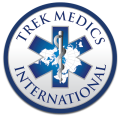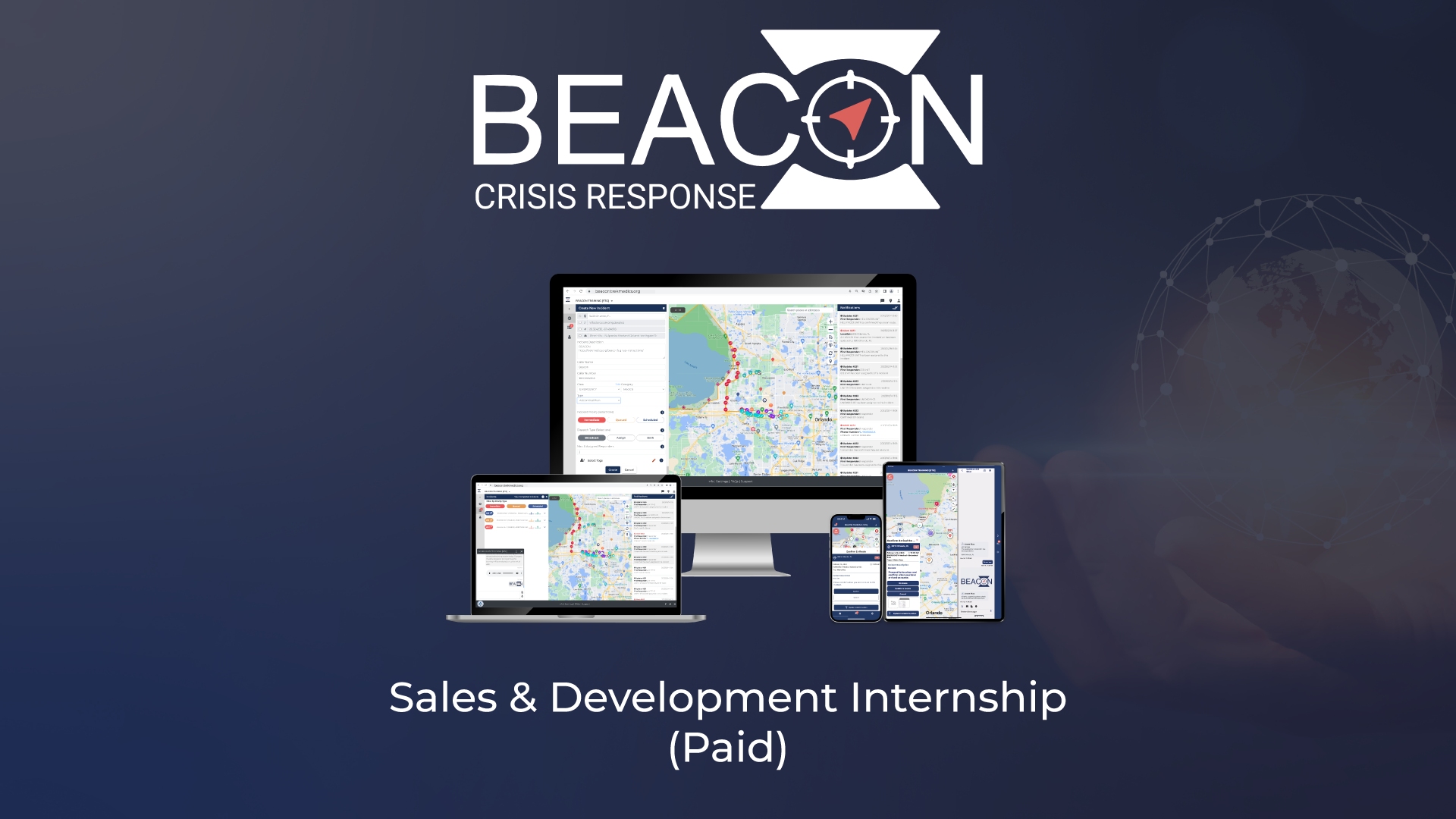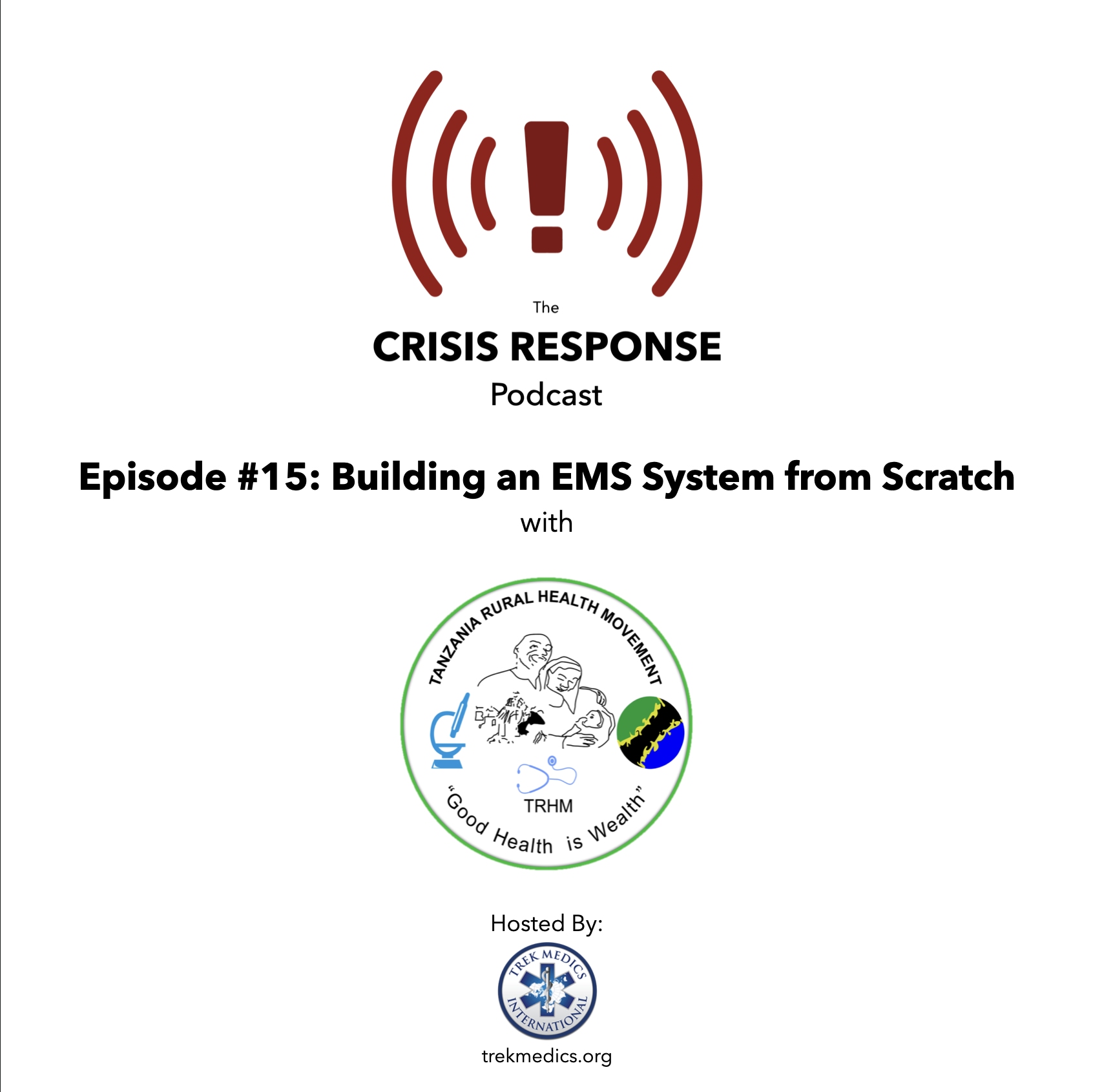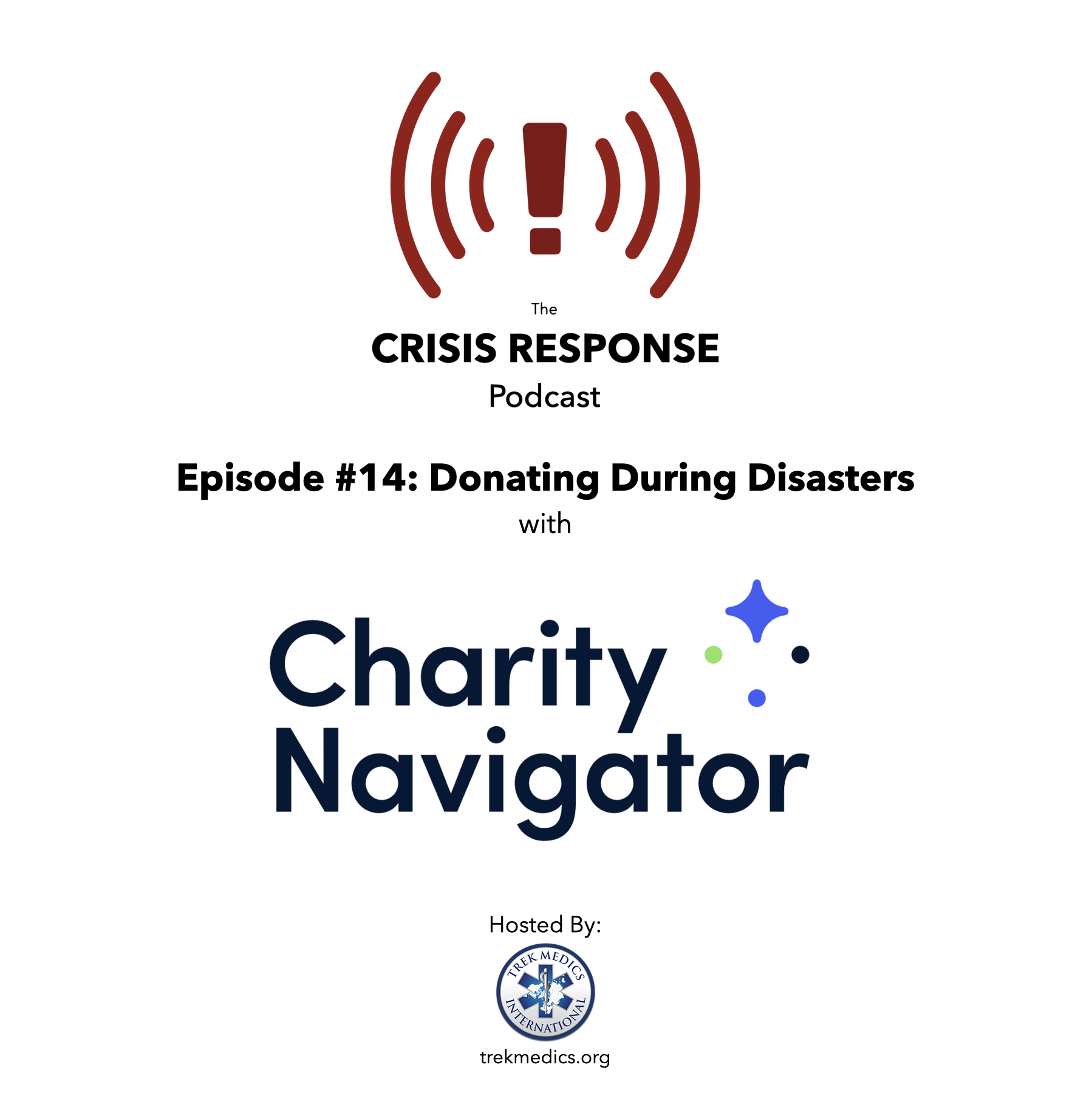In 2013, Tiffany Lee, a law student at Washington and Lee Law School in Lexington, Virginia, called us up and asked if there were any legal aspects to our work she could help out with. We soon started talking about Good Samaritan protections — where they existed, who they protected, what they were comprised of, and a host of other questions we knew little about outside the U.S. Two years later, Tiffany published the first iteration of this research in the December 2015 issue of EMERGENCY PHYSICIANS INTERNATIONAL — you can read it here starting on page 30, or scroll down for full text.
Congratulations to Tiffany for all the hard work she’s put into this — we look forward to seeing where it leads us next.
The Good Samaritan in Law and Practice
By Tiffany Lee, MA, JD, RMP
Published on December 17, 2015
A study of international protection for emergency responders, and a proposal for a model responder protection law.
Good Samaritan laws are designed to encourage helping behavior in people who witness an emergency situation. Typically, Good Samaritan laws do this by protecting the person who responds from legal consequences if there is a negative outcome despite the responder’s best efforts. That individual is then able to assist in good faith without the fear of legal action.
There are two types of laws that are typically described as Good Samaritan laws: (1) laws which protect a voluntary responder when they provide assistance to an emergency victim in good faith and without any anticipation of a reward or compensation (primarily seen in the United States), and (2) laws that require anyone witnessing an emergency situation to assist the victim(s) in whatever way they are competent and able to do so, as long as it would not put them at risk as well (primarily seen in Europe and Australia). Many of these laws also contain provisions to protect responders from a civil suit or criminal charges when they act because of a legally compelled duty, and act in an appropriate manner.
Good Samaritan laws (also known as responder protection laws) vary greatly in the level and type of protections they provide, as well as the persons and situations they will protect. Such variations are heavily influenced by countries’ cultural and legal contexts. This paper examines existing laws of this type, and provides recommendations for best practices in implementing effective responder protection laws that strike a balance between encouraging bystanders to provide rapid assistance to victims of emergencies and the need to leave adequate legal remedies to protect victims who are injured by an abusive or neglectful responder.
The Need to Protect Responders
In the United States, most people who give assistance in an emergency assume that they have some form of legal protection if they act in good faith. In most countries where this protection is lacking, many people also know that they do not have any protection, resulting in potentially tragic consequences. The most recent and shocking example of this is the series of cases in China, beginning with the Peng Yu case in Nanjing, in 2007. In this case, an elderly woman fell when exiting a city bus. Peng Yu, who had exited the bus just before the woman, assisted her and helped her to the hospital. Later, the woman and her family sued Peng Yu, alleging that he had caused the fall.1 There was no evidence that Peng Yu had in fact caused the fall, but the judge reasoned that Peng Yu would not have assisted the woman unless he was at fault in the accident. This case established a presumption that, lacking clear evidence to the contrary, a rescuer could be held at fault in any accident in which they offered assistance. This ruling led to a series of cases in which injured individuals sued those coming to their aid, alleging that the rescuer had caused the injury. The injured person usually won in court, unless there was clear proof that the rescuer was not involved in causing the injury, usually in the form of witness statements or video evidence. These cases caused bystanders to fear getting involved when someone was injured or in danger, because they knew how easily they could be held liable for the injury. This led to one instance in 2009 where a man who had fallen and was injured shouted to the crowd, “It is not anybody’s fault. I fell by myself” in an attempt to prompt someone to assist him.2
After a series of highly publicized accidents in which injured people, including a young child, were left to die without assistance, Shenzhen province implemented China’s first Good Samaritan law in 2013. This law protects those who help an injured person from civil liability for their actions, unless they clearly commit a major fault in their actions. In addition, the law removes the presumption that a rescuer is liable for the injury, and places the burden of proof on the injured party who wants to sue a rescuer for the original injury.3 This law is still very new, and its effects are not yet known. The hope, of course, is that this law will relieve the fears of potential responders and encourage them to help the injured and prevent unnecessary death and disability.
Characteristics of Existing Laws
Existing Good Samaritan laws share some similarities in both coverage and intent, but there are notable differences. In the United States, each of the 50 states has its own law. Some of these state laws are single, standalone Good Samaritan laws, where all types of medical professionals as well as bystanders are given protection for a range of good faith rescue and assistance behaviors. In other states, the Good Samaritan laws are a compilation of related laws, with each law protecting one particular profession or class of individuals.
The type of behavior typically protected in Good Samaritan Laws in the United States is reasonable behavior, or behavior that, at most, could be considered ordinary negligence.4 Gross negligence, actions taken in bad faith, reckless behavior, and intentional injury are specifically excluded in most of the existing Good Samaritan laws.5
The activities covered by current Good Samaritan statutes in the United States range from a very narrow and specific list of first aid skills6 to very general classes of activities.7 Some US states only protect assistance that is given at the scene of an accident8 or at the scene of an emergency.9 A minority of states provide protection for assistance given during transit to the hospital.10
In New South Wales, the Civil Liability Act 2002 gives very broad protection to any person who acts as a Good Samaritan out of goodwill and without an expectation of compensation. The law protects those providing both medical and non-medical assistance during an emergency to a person who is injured or at risk of becoming injured.11 The law in Western Australia is similar.12
In Canada, Prince Edward Island provides broad protection to voluntary responders.13 The law grants protection to those who assist an injured or ill person because of an emergency or accident, regardless of whether the assistance is rendered at the scene of the accident or elsewhere. Responders must act without expectation of compensation and are not covered if their behavior is grossly negligent. The law in Nova Scotia is similar and includes protection for those who donate or distribute food in an emergency, as long as the donor or distributer believed the food to be fit for human consumption at the time of donation or distribution.14
ANALYSIS
Protected Individuals
Existing laws in the United States are not consistent in who is protected by the Good Samaritan law. Two classes of potentially protected persons emerge from the existing laws: medical professionals, and all members of society. Each potentially protected group offers something different to the victim of an accident or serious illness.
Medical professionals, of course, can often provide the ill or injured with a higher level of care than the untrained bystander. Medical professionals are a small group, however, and finding one at the scene of every emergency is unlikely. Bystanders, although having either no training or only a little training, may still be able to assist in some way. A bystander may be able to help control severe bleeding, pull an accident victim from a burning car, or use an automated external defibrillator. These actions are potentially lifesaving, or may at least serve to bridge a gap between an accident and the arrival of trained personnel.
The issue of who should be provided with legal protection is particularly significant in those areas of the world where emergency medical systems are not fully developed. In these areas, bystander assistance may be the only help given to an ill or injured person before the victim arrives at the hospital. Refusing protection to the untrained or lesser trained bystander would discourage these people from providing assistance and may greatly reduce the chance of a victim receiving lifesaving care.
Protected Actions and Locations
Protection can be offered for a variety of emergency situations and for different actions taken in response to those emergency situations. There are three commonly protected scenarios: sudden life or limb threatening emergencies such as accidents, falls, and natural disasters; illnesses not caused by an accident, or another external emergency situation, such as a heart attack; and transportation to a higher level of medical care after either an accident or sudden illness. Three types of actions are usually considered for protection in response to one or more of these above scenarios: strictly medical assistance in response to emergent medical needs; non-medical assistance to an emergency scenario, such as pulling a drowning person out of a lake; and providing transportation or transportation assistance.
There are also variations in the location where protected care can be given. Many existing laws protect only that care which is given at the scene of the accident or emergency. This could complicate protection for a Good Samaritan if a victim is able to escape or move away from the scene of the emergency, yet still requires essential medical assistance. This is especially true in those areas where definitive medical care is hard to find. A victim may need to travel significant distances to reach the needed care, and might need ongoing support from lay responders to survive the trip.
The Nature of the Protection
The protection currently offered to responders in the United States is protection from civil suit by the person assisted, and this is the approach China is trying as well. In the European countries that attach responder protection laws to their duty-to-act laws, compensation is also occasionally available to responders who are injured while assisting in an emergency. Lay responders in some developing countries may face an additional difficulty: involvement in the criminal justice system, which could include detention for questioning and being forced to travel repeatedly to testify about the incident. Also, people transporting sick or injured people to the hospital may be required to pay the hospital admission fees, and may face detention or civil suit by the hospital if they do not. In these countries, some protection within the criminal justice system is essential, and will need to include a number of considerations. Perhaps most critical is the need to protect the responder from being arrested and charged by the criminal justice system based only on the fact that the responder assisted the victim. Also, in addition to detention by the authorities, it is necessary to restrict the ability of hospitals to detain voluntary rescuers who bring ill or injured people to the hospital. A strong responder protection law should also restrict hospitals from holding rescuers liable for the cost of the injured party’s hospital admission or later medical care—either at the time of the actual emergency or through later legal action.
The other problem that may keep bystanders from assisting victims of an emergency incident is not personal criminal liability but the substantial inconvenience of being deeply involved in the investigation of the incident. While it is reasonable for a bystander to be asked to provide a statement if they observed an accident or a crime, it discourages helping behaviors if the criminal justice system can force voluntary rescuers to repeatedly testify in person in court, especially when it requires a great deal of uncompensated travel. The fear of time consuming court appearances and significant expenses could deter an otherwise willing rescuer from assisting a person in distress.
Proposal for a Model Law
From the above analysis, it is possible to develop a model Good Samaritan Law to protect voluntary responders rendering aid in an emergency. This paper presents the model law as a set of guidelines rather than a specific text to ensure that countries with diverse legal systems can individually adapt the guidelines to fit the needs of their legislative processes.
To ensure that bystanders will feel comfortable to render aid, it is essential that Good Samaritan laws be as straightforward as possible to avoid confusing potential rescuers and thus deterring them from offering assistance. Generally, this will require a broad range of activities and individuals to be protected. The guidelines that follow reflect the ideal of an easily understood law.
To have the greatest effectiveness, a Good Samaritan law must protect both medical professionals and bystanders. Protection for bystanders should include both those bystanders with formal training in first-aid, and those who have no formal training. This is for two reasons. First, bystanders who have received training may not know if the training they received qualifies under the law, and may be hesitant to help if they think they might be exposed to liability. Second, even untrained or minimally trained bystanders may be able to provide life-saving assistance, either from instinct and goodwill, such as pulling someone from a burning car, or from first-aid information they may have acquired in school, in the media, or heard from others.
Medical professionals must be protected as well, but the circumstances can be more limited. Because of their training, doctors, nurses, paramedics, and other health professionals are expected to provide a certain standard of care to the ill or injured as part of their jobs. Their formal patients, if they suspect they have been injured by the negligence of the medical professional, should retain some degree of ability to seek a remedy from the medical professional for that injury. Despite the need to offer some remedy to those who may have been harmed, it is nevertheless essential to provide some degree of protection to encourage medical professionals to provide assistance outside of their daily duties. For example, a Good Samaritan law might not apply protections to a physician while on duty in a hospital, but it would protect that doctor when he is off duty and helps at an accident.
The other consideration for the protection of medical professionals is whether medical professionals who are licensed in a different country, state, province, or region should be protected if they respond to an emergency. In normal circumstances, it may seem that the benefits of protecting foreign professionals are minimal. In most countries, there will usually not be a large number of foreign medical professionals visiting at any given time, and the chances of them becoming involved in an emergency response resulting in legal action may be slim to none. While it would be most effective for a Good Samaritan law to protect these foreign professionals anyway, to encourage a response from all possible rescuers, a provision to protect foreign medical professionals can become a critical issue in a widespread disaster. Especially in smaller countries, or those countries still developing their medical and emergency response systems, a major disaster may result in a substantial influx of foreign-licensed medical professionals. If these professionals, often volunteers, are not offered some degree of protection from liability for their assistance, it may become increasingly difficult to find critical professional resources when they are needed.
An effective law must also define clearly what actions will be protected under the Good Samaritan law. Good Samaritan laws are generally thought of as pertaining only to medical assistance, but even then, it can be hard to distinguish where strictly medical assistance begins and ends. In addition, Good Samaritan acts can easily diverge from medical assistance to include such acts as transportation to a hospital or removal from a dangerous situation. Since the line between these acts and the provision of medical assistance can blur easily (if a rescuer moves someone from a dangerous situation to facilitate first-aid, for example), it is important to draw clear lines. To ensure responders feel reasonably protected when they act to save a life in an emergency, it is essential that Good Samaritan laws expand their protections beyond strictly medical assistance. The law must also cover the rescue of persons who are reasonably believed to be in immediate danger, and transportation of the ill or injured person to the hospital.
Standard of Care
While most voluntary responders will assist a victim as best they can and without deliberately doing harm, any law protecting rescuers must also offer some protection to the victim. Most of the Good Samaritan laws already in existence protect those rescuers who act in good faith, and whose actions are either reasonable or demonstrate—at most—ordinary negligence. These laws typically do not protect responders who act in bad faith, are grossly negligent or reckless, or who willfully disregard the safety and wellbeing of the person they purport to be helping.
Reasonable behavior, as it is generally defined, is behavior that a person of similar experience and ability would do, or would consider appropriate to do, in the same situation. This decision must take into account a number of characteristics of the responder, including “physical and mental characteristics, moral qualities and skill. This introduces a subjective element into the test to assess the appropriate standard of care. Thus, the standard of care to apply will vary depending on the level of skill and knowledge possessed by the actor.”15 The standard of reasonable behavior could determine, for instance, if removing a car accident victim from a car was based on a reasonable belief that remaining in the car was dangerous, or if removing the person was an act of negligence or recklessness. The Law Reform Commission’s report on the Civil Liability of Good Samaritans and Responders suggests a number of factors courts should consider in determining if a particular responder’s behavior is reasonable or not. These factors are: the probability of an accident caused by the responder’s behavior, the gravity of the threatened injury, the cost of eliminating the risk, and the social utility of the responder’s conduct.16 The last point is particularly noteworthy; this factor suggests that the determination of reasonableness should consider not only the behavior in that particular scenario but also the overall benefit to society of encouraging the conduct.
Negligence comprises those actions that do not rise to the standard of reasonable behavior. For example, negligence is “
[w]
here it can be shown that the Good Samaritan knew or ought to have known that his or her intervention would injure the stranger…”17 Gross negligence is those actions that are performed out of willful neglect or with reckless disregard for the safety of the victim. The line drawn between ordinary and gross negligence in most Good Samaritan laws offers an appropriate level of protection both to those who may be the victim of a rescuer who acts in an extremely inappropriate manner and to those good-faith responders who have made an error in judgment during an emergency response. Likewise, responders can feel comfortable knowing that they are protected if they make a good faith mistake while trying to assist in an emergency, while individuals acting in bad faith will not be able to take advantage of the law to cause deliberate harm to others.
An effective Good Samaritan law must be easy to understand, provide protection for both local and foreign medical professionals and bystanders, and cover not just medical assistance but also associated emergency care. In addition, a model law must still provide some legal recourse for those who are injured by those acting in bad faith or with gross negligence. These standards will encourage both professionals and bystanders to confidently provide assistance in emergency situations.
REFERENCES
1. He, H. (2013, August 1). Shenzhen introduces Good Samaritan law. Retrieved from South China Morning Post: https://www.scmp.com/news/china/article/1293475/shenzhen-introduces-good-samaritan-law
2. Shinan, L. (2011, January 5). Need to protect our Good Samaritans. Retrieved from China Daily: https://www.chinadaily.com.cn/opinion/2011-01/05/content_11794724.htm
3. He, H. (2013, August 1). Shenzhen introduces Good Samaritan law. Retrieved from South China Morning Post: https://www.scmp.com/news/china/article/1293475/shenzhen-introduces-good-samaritan-law
4. E.g., Conn Gen Stat Ann § 52-557B (2007) “any person operating a cardiopulmonary resuscitator or a person trained in cardiopulmonary resuscitation… shall not be liable to such person assisted for civil damages for any personal injuries which result from acts or omissions by such person in rendering the emergency care, which may constitute ordinary negligence.”
5. E.g., Ind Code Ann § 34-30-12-1 (b) “a person who comes upon the scene of an emergency or accident…and in good faith, gratuitously renders emergency care at the scene of the emergency or accident is immune from civil liability for any personal injury that results from…any act or failure to act to provide or arrange for further medical treatment or care for the injured person; except for acts or omissions amounting to gross negligence or willful or wanton misconduct.” See also Del Code Ann tit. 16 § 6801(a).
6. E.g., Okla. Stat. tit. 76, 5(a)(2). For responders who are not medical professionals; “any person who in good faith renders or attempts to render emergency care consisting of artificial respiration, or preventing or retarding the loss of blood, or aiding or restoring heart action or circulation of blood to the victim or victims of an accident or emergency, wherever required, shall not be liable for any civil damages as a result of any acts or omissions by such person in rendering the emergency care.”
7. E.g., Md. Code Ann., Cts. & Jud. Proc. 5-603(a). For lay responders “An individual who is not covered otherwise by this section is not civilly liable for any act or omission in providing assistance or medical aid to a victim at the scene of an emergency…”
8. E.g., 745 Ill Comp Stat 49/1-75. For certain professionals, including dentists, respiratory therapists, optometrists and physical therapists “…who in good faith provides emergency care without fee to a victim of an accident at the scene of an accident shall not, as a result of his or her acts or omissions, except willful or wanton misconduct on the part of the person, in providing the care, be liable for civil damages.
9. E.g., Utah Code Ann. 78-11-22(1). “A person who renders emergency care at or near the scene of, or during an emergency, gratuitously and in good faith, is not liable for any civil damages or penalties as a result of any act or omission by the person rendering the emergency care, unless the person is grossly negligent or caused the emergency.”
10. Wash. Rev. Code § 4.24.300. “Any person, including but not limited to a volunteer provider of emergency or medical services, who without compensation or the expectation of compensation renders emergency care at the scene of an emergency or who participates in transporting, not for compensation, therefrom an injured person or persons for emergency medical treatment shall not be liable for civil damages…” See also Minn. Stat. 604A.01, subd. 2(b); NJSA 2A:62A-1, 2A:62A-8, 2A:62A-9 (2007).
11. Civil Liability Act 2002 Section 57. “A good samaritan does not incur any personal civil liability in respect of any act or omission done or made by the good samaritan in an emergency when assisting a person who is apparently injured or at risk of being injured.”
12. Civil Liability Act 2002 Section 5AD. “A good samaritan does not incur any personal civil liability in respect of an act or omission done or made by the good samaritan at the scene of an emergency in good faith and without recklessness in assisting a person in apparent need of emergency assistance.”
13. Volunteers Liability Act 1988. “When… a volunteer renders services or assistance at any place, the volunteer is not liable for damages for injuries to or the death of that person alleged to have been caused by an act on the part of the volunteer while rendering services or assistance, unless it is established that the injuries or death were caused by gross negligence…”
14. Volunteer Services Act (Good Samaritan) 1989. “A volunteer is not liable for damages incurred as a result of injury, illness, disease or death resulting from the consumption of food or the use of sundries by a person in need unless it is established that (a) the injury, illness, disease or death was caused by the gross negligence or the wilful misconduct of the volunteer; or (b) the volunteer knew that the food or sundries were contaminated or otherwise unfit for human consumption or use at the time of donation or distribution, respectively.”
15. Law Reform Commission. (2009). Civil Liability of Good Samaritans and Volunteers. Dublin: Law Reform Commission.
16. Id.
17. Id.








